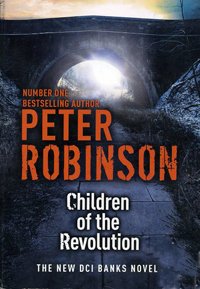In a cutting which once carried a railway line that Dr Beeching took his knife to in the 1960s, a corpse is discovered. It is Gavin Millar, a disgraced former lecturer. Most oddly, despite his emaciated and scruffy appearance, he was carrying £5000 in cash. DCI Banks, of Eastvale CID is given the case here in the 21st novel in Peter Robinson’s acclaimed series.
After establishing that Miller was thrown from a bridge over the disused line, Banks uncovers a serpentine knot of connections involving the girls who caused the lecturer’s dismissal, a convicted drug dealer, and a classy (if slightly wilted) beauty from an important family. The enigma he’s tackling dates back to when some of these key characters were at university, and involved in radical student politics.
Eastvale seems like an amalgam of the West Yorkshire town of Ripon and London suburb Richmond. The Yorkshire settings are wonderful. Wet, cold, windswept – you will need to wear a wax jacket to read this one. Banks is a good copper, even though his personal life is unsettled. He is valued by his superiors, but not totally trusted. As he nears retirement, he wonders if a few years of the quiet life might enhance his promotion and pension prospects. He rejects the soft option, and despite cautions from his bosses about upsetting golfing cronies of the Assistant Chief Constable, he follows his investigative nose.
Layers of deceit and evasion are stripped away, and Banks finally gets to the bottom of a very messy murder. Robinson loves his stories to have a past, and this particular past resonates with the sound and fury of the Miners’ Strike in 1984. Beautiful and idealistic student girls literally embrace their working class heroes, but those turbulent days have far-reaching consequences. Throw in a potential Home Secretary, an alluring Italian personal assistant to a best-selling author, and more than a few dark secrets, and you have a dramatic collision between yesterday and today.
Just a cautionary thought. If you were in a pub quiz, and had to identify a fictional detective from the following description, who would you choose? He can be curmudgeonly, and is either widowed, divorced or resolutely single; he is urbane, well-read, and his colleagues might insult him with the tag ‘intellectual’; he has particular tastes in music, and is frequently unpopular with his superiors; he enjoys a drink, but has a sometimes troubled relationship with the opposite sex; oh yes, and he will probably have had a relationship with one of his female colleagues at some stage. That Banks and several other fictional coppers tick most of those boxes is not a criticism in itself, but more of a reflection that this sub-genre is well-populated.
I have read all the DCI Banks stories, and enjoyed them equally. The big question to ask with any long-running series is this: Will a younger reader, or someone new to crime fiction, be able to read this book and get the same thrill that DCI Banks ‘lifers’ got when they first read Gallows View in 1987? And I would answer: Yes, I think so. Robinson faces the challenge of attracting new readers as well as satisfying addicts with his usual aplomb. Is this an original nail-biter that makes us think long and hard about the human condition and how we deal with each other? Perhaps not. Is this a beautifully crafted crime novel which has – if you will excuse the cricket metaphor in this Ashes Summer – a well-disguised slower ball? Absolutely.
Children Of The Revolution comes out for Kindle 1 August, and in print later in the month.
Hodder & Stoughton
Print/Kindle/iBook
£7.99
CFL Rating: 4 Stars











Banks wasn’t always single. The disintegration of his marriage was interesting to watch unfold.